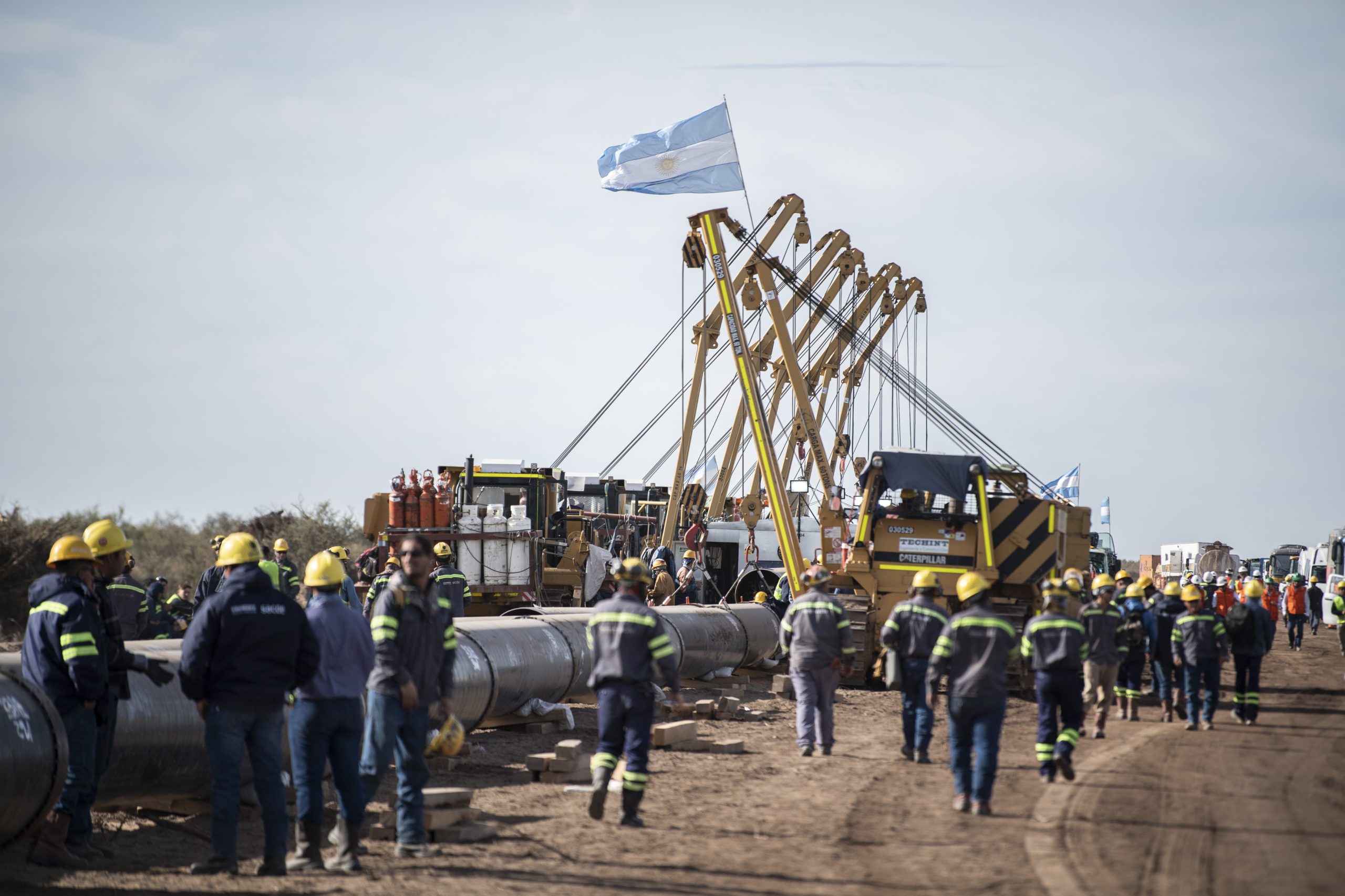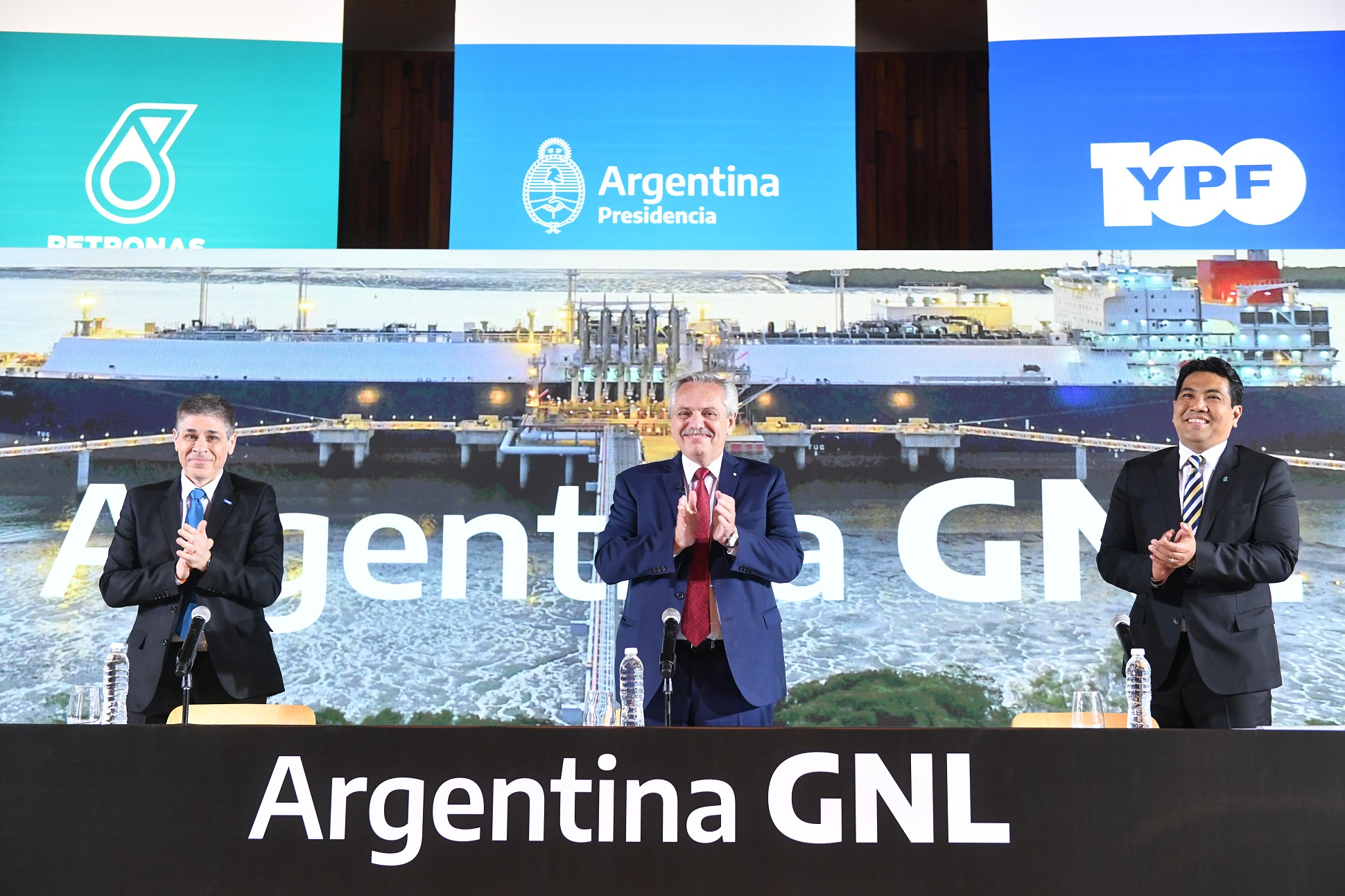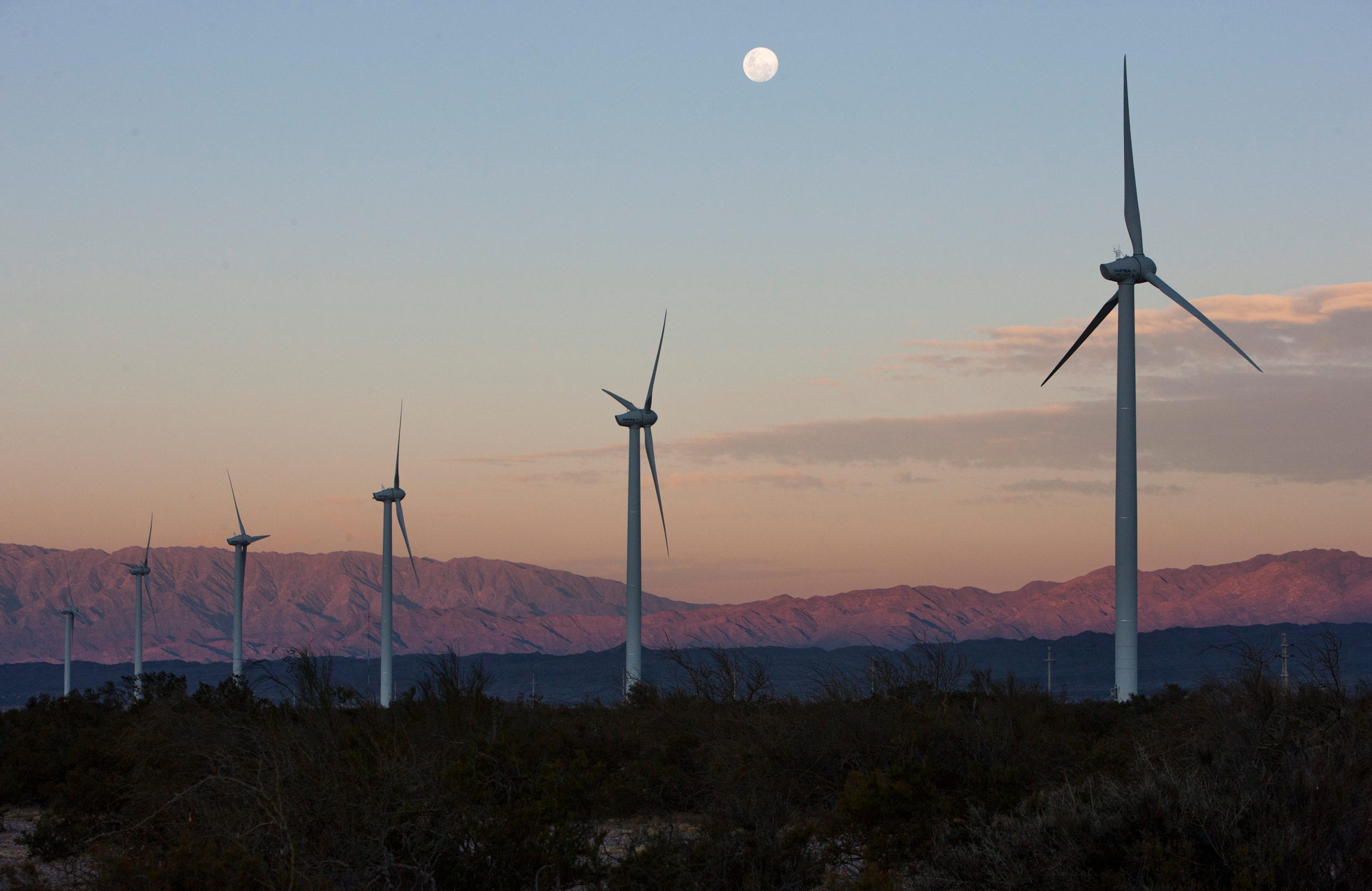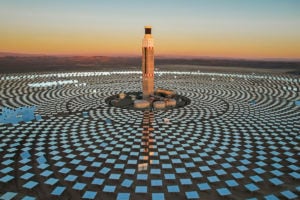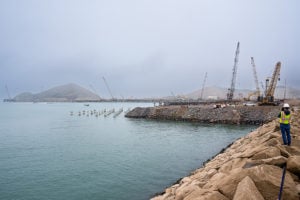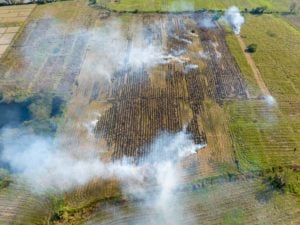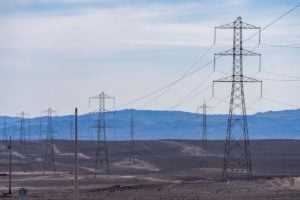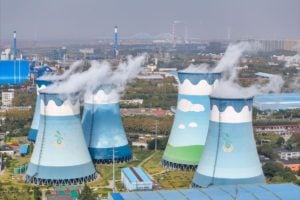Under its new president Javier Milei, Argentina is hoping to move ahead with its plans to process and export liquefied natural gas (LNG), taking advantage of the potential of the vast Vaca Muerta oil and gas field in northern Patagonia.
However, if the new government is to realise these ambitions, it must confront several looming questions: the economic risks of the investment needed, its ability to compete with countries with more developed industries, and the threats a scaling-up of gas infrastructure would pose to Argentina’s climate commitments.
Over the last five years, LNG has experienced some of the fastest growing demand amongst fuels worldwide, with a cumulative annual rate of 3.9%, according to data from the consulting firm Economía & Energía shared with Diálogo Chino. This liquefied form of natural gas is derived through a cooling process that reduces the volume of the gas by around 600 times. In this format, it can be shipped in large quantities to markets that cannot be reached by pipeline.
The liquefaction process requires the construction of plants that typically cost billions of dollars and pipelines dedicated to supplying these port terminals, on top of the investment in exploration and production facilities at gas fields. This is infrastructure that Argentina currently lacks. But despite having announced several LNG projects, the country has not yet been able to attract investors to finance their creation.
Argentina’s LNG projects
There are three different LNG projects in Argentina in the pre-feasibility study stage, the most advanced of which is the state-controlled oil company YPF and Malaysia’s Petronas joint venture that has promised an investment of up to US$50 billion, should it move forward. The proposal envisages the construction of three dedicated pipelines and a plant with an annual capacity of 25 million tonnes.
International LNG conglomerate Excelerate Energy and Argentina’s Transportadora de Gas del Sur (TGS) jointly have another plan in the pipeline in Bahía Blanca, south-west of Buenos Aires. This project is smaller in scale, with an initial module of 4 million cubic metres per day, though this could eventually increase to four modules of the same capacity.
Tecpetrol, the oil company of Argentine conglomerate Techint, has similarly expressed interest in investing in liquefaction plants, including in the northern Patagonian province of Río Negro. It has not given further details of the project.
In all three cases, the companies involved stated that the enactment of a new law to promote the gas industry is one of the necessary conditions for moving towards the development stage.
After years of discussions with oil companies, Argentina’s previous government, led by Alberto Fernández, presented a bill granting them benefits including exemption from import tax and an assurance of “fiscal stability” for 30 years, which passed the lower house of congress.
However, with the change of government came a slight change in preferences: shortly after taking office last December, the executive branch of Milei’s administration presented a new bill floating similar ideas, but with greater concessions to private capital, including eliminating the need for oil companies to prioritise the domestic market.
“Argentina is famous for its regulatory volatility due to its recurrent antagonistic cycles between open and closed economies, which have alternated for almost a century. This volatility threatens the viability of long-term investment projects,” says Pablo Rueda, an Argentine lawyer specialising in oil and gas regulation.
Beyond the pending decision over the new law, the Milei government has also called on private oil companies interested in LNG investments to coordinate their efforts. “LNG is only viable if there is a single project at the national level among all the companies, led by YPF,” said a company source who asked not to be identified. They said the state firm will meet with interested companies in mid-March, and that there are “already four that will surely enter” into LNG initiatives.
Meanwhile, the government is moving ahead with the tender for another key project, this time to expand Argentina’s gas pipeline network and continue reducing its dependence on imports. With financing from the Development Bank of Latin America and the Caribbean (CAF), a gas pipeline is expected to be completed this year to transport gas from Vaca Muerta to more northerly provinces such as Córdoba and Catamarca. This supply is set to completely replace the gas shipments the country currently receives from Bolivia.
The climate cost of LNG
Many supporters of natural gas have sought to position it as a “transition fuel” – with this wording even alluded to in the final text of the COP28 climate change conference in 2023. This framing often sees gas pitched as a potential replacement in power generation for coal – a much more polluting fossil fuel. But the greenhouse gas emissions associated with LNG remain significant.
For Juan Carlos Villalonga, an energy consultant and former deputy in Argentina’s congress, to call gas a transition fuel is misleading. “It is a fossil fuel that will have to be abandoned,” he says. “Its incorporation is beneficial as a fuel only to the extent that it serves to accelerate the closure of coal plants.”
He adds that a switch from coal to gas is not always justifiable, as any new gas plant will itself require shutting down to be replaced by renewable or zero-emissions energy sources, as forecasts suggest will be necessary in the long term.
In addition to the emissions inherent to natural gas extraction, another drawback to LNG is its increased energy intensity, due to the liquefaction, transport, regasification and storage involved in its production and use, which substantially increases its carbon footprint. In other words, transforming the gas into a liquid state, transporting it by ship to the destination port and converting it back to a gaseous state implies a far higher energy cost.
Over the entire life cycle, LNG emissions may even exceed those of coal, according to an upcoming Cornell University study. “The methane emitted during the transport of LNG by combustion to drive the ship’s propellers, in particular, contributes to the total emissions, since it is about 80 times more potent than carbon dioxide,” explains Álvaro Zopatti, an Argentine climate and environmental consultant.
While the study looks specifically at LNG in the United States, its conclusions may be even more pertinent to Argentina: a country that is far from potential import partners in Asia and Europe, implying a longer distance travelled, and therefore higher fuel consumption, and increased CO2 and methane emissions.
Rueda acknowledges the climate challenges associated with LNG and believes that new projects could be complemented with carbon capture – a technology that seeks to store the carbon dioxide generated by burning natural gas so that it is not emitted into the atmosphere. He says such projects will allow them to be sustainable in the long term while competing with clean energy.
“Argentina must put carbon capture projects on the climate change mitigation agenda and encourage the use of natural gas in global markets as a necessary step in the energy transition from coal to renewables,” Rueda tells Diálogo Chino.
However, carbon capture has not yet been tested on a large scale, and there are widespread doubts about its feasibility due to the high cost associated with such projects.
Worldwide, current investment in planned and under-construction natural gas pipelines reportedly stands at over $720 billion, with an additional $190 billion set to be spent on infrastructure for LNG imports, confirming and extending the use of the fuel to well beyond 2030. The Climate Action Tracker project has noted that the emissions generated by planned LNG expansion would put the targets of the Paris Agreement at risk.
In this context, US president Joe Biden has acknowledged his country’s status as the world’s largest exporter of LNG, and announced on 26 January the suspension of a dozen new LNG export authorisations.
Like the US, Argentina also has climate goals to meet that could be jeopardised by its LNG expansion ambitions. Its 2030 energy transition plan commits to limiting net emissions to 349 million tonnes of CO2 and achieving 57% renewable energy use in electricity generation.
Barriers to LNG in Argentina
Another cause for doubts over Argentina’s LNG export potential is that its plans, and capacity, may be arriving too late. If work were to begin in the very short term, which does not seem feasible as projects are still under discussion, the first shiploads could only be exported in three years’ time, and maximum capacity would be reached in the early 2030s, according to YPF information shared with Diálogo Chino.
This creates some uncertainty and risk for the country, with several consultancies and companies foreseeing a decline in global demand from 2030. According to the climate thinktank E3G, the implementation of the European energy plan REPowerEU means the volume of gas consumed by the European Union’s member states could shrink by 52% in 2030 from 2019 values.
The US and Australia have won the first round of the battle to replace Russian gas. The space for Argentina as a competitive producer is quite limitedChristian Alonso Sisini, Argentine energy consultant
Last year, former Argentine president Fernández signed a memorandum of understanding with the president of the European Commission, Ursula von der Leyen, in which they agreed to promote the supply of LNG from Argentina to the bloc. But this is a non-binding document that does not guarantee any type of investment. A source at a European embassy in Argentina, who asked not to be identified, told Diálogo Chino that European interest is likely to be more focused on green hydrogen and not LNG, which they consider will be a more dispensable fuel from 2030 onwards.
In its 2023 energy outlook, the energy giant BP outlines three possible scenarios for 2050. The most optimistic for LNG is the “new momentum” scenario, which takes into account the decarbonisation targets set in recent years and anticipates a 30% growth in demand for LNG between 2030 and 2050. The second case, “accelerated”, projects a move towards an energy sector with lower carbon emissions and, finally, there is an assessment of a “net zero” scenario. In the latter two cases, LNG purchases would be reduced by 40%.
In addition, in its 2023 World LNG Report, the industry organisation International Gas Union projects a strong inflow of LNG supply in the coming years that could reduce the space for Argentina to occupy. Considering only projects already under construction, installed liquefaction capacity would grow by 32% between 2022 and 2028, according to the report. The largest increase would come from the United States, followed by Qatar, Canada, and Mozambique.
“For Argentina to be competitive, it has to have natural gas prices below $2 per million British thermal units, and the price of LNG should not go below $10 MMBtu,” says Raúl Bertero, deputy dean of the engineering faculty at the University of Buenos Aires.
Today, the Argentines state pays gas producers a price of almost $4 per MMBtu on average to supply the local market – double the value Bertero states – as a ceiling to be able to join the exporters’ club.
“It is clear that the US and Australia have won the first round of the battle to replace Russia in the international gas market,” says Argentine energy consultant Christian Alonso Sisini. “They have already beaten us and will continue to do so. The space where we can see ourselves as a competitive producer in the medium- to long-term is quite limited.”
